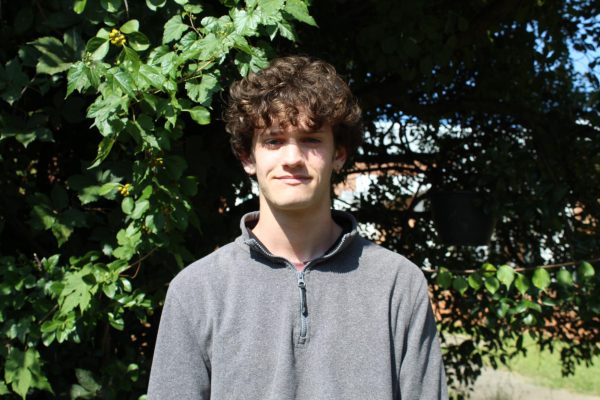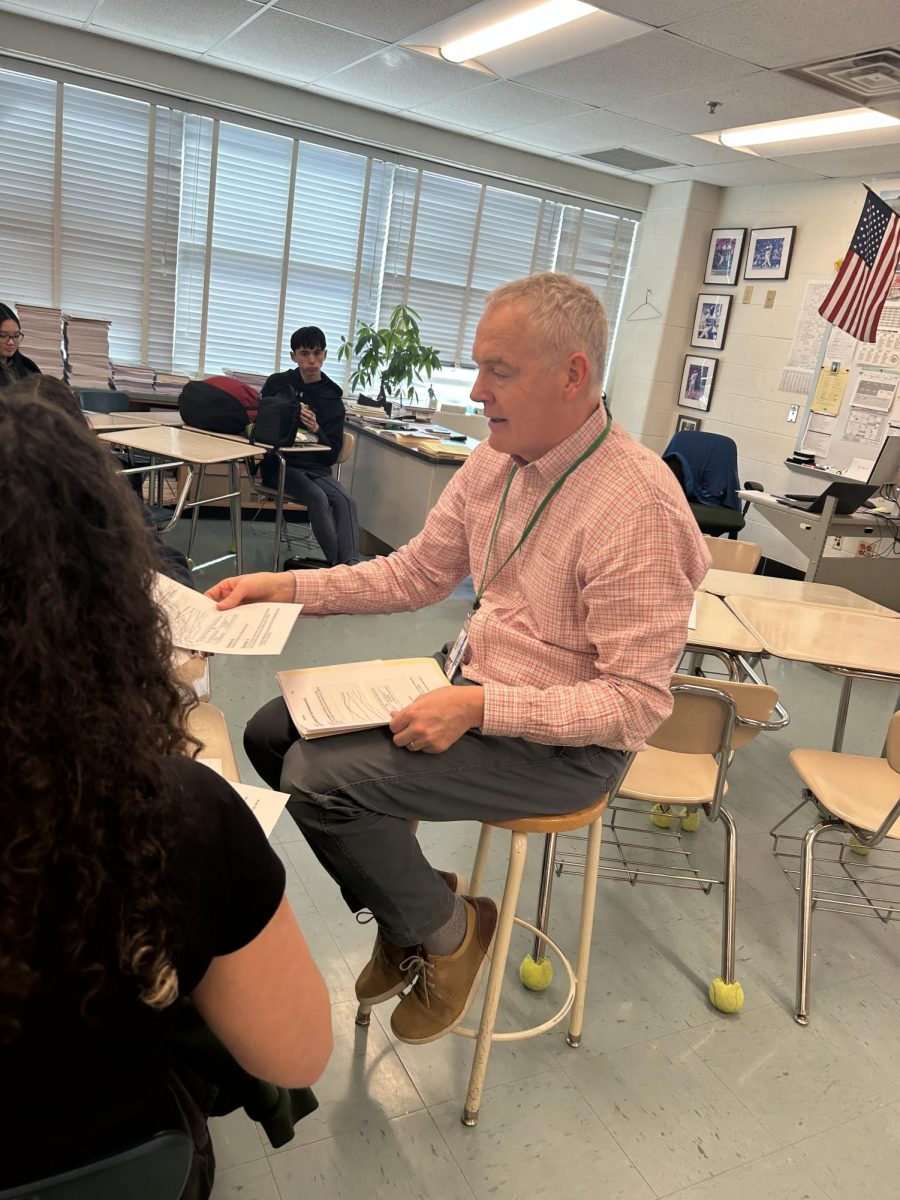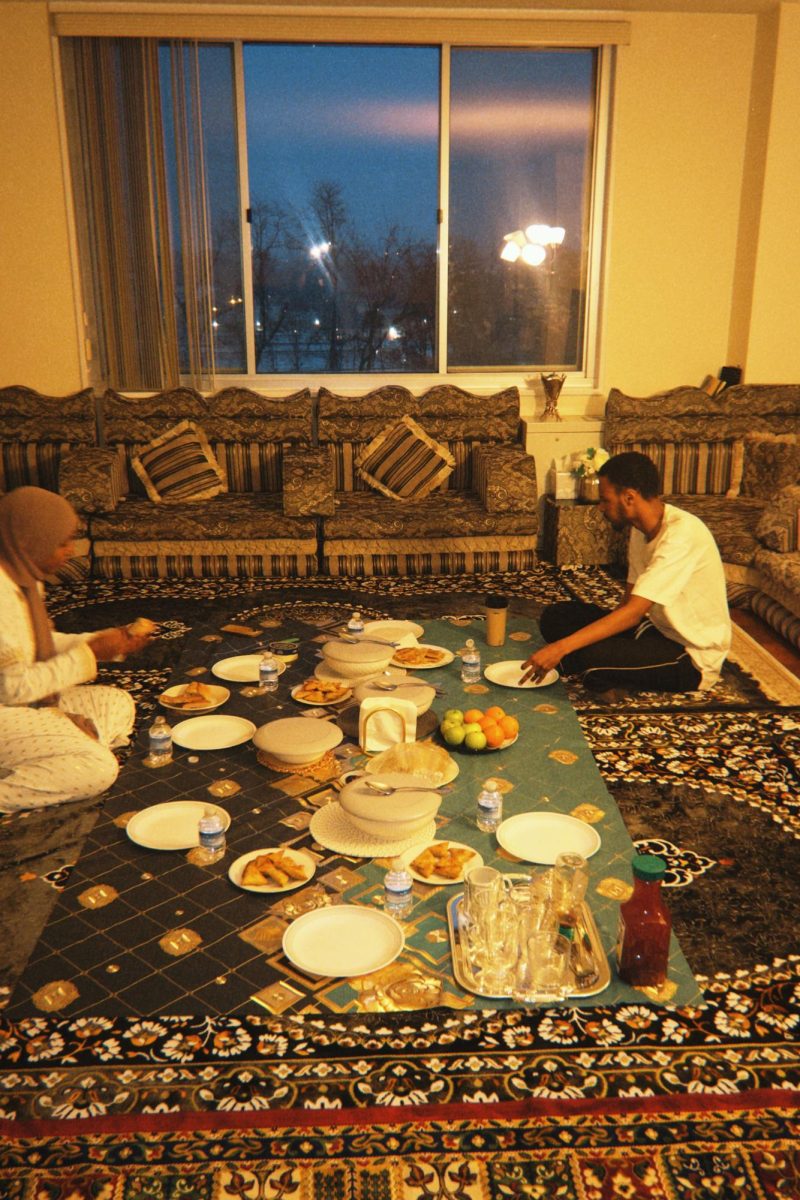Religion and spirituality of the world through class interaction

Inside the historical repository and cozy classroom of social studies teacher Mitchell Joy, you will find a semester-long course that studies and compares seven major religions of the world. Covering about 80% of the world’s population, Comparative Religions stresses the importance of understanding these faiths as a key to understanding the world.
“I like bits and parts of each of [the religions in class],” Joy said. “I love the simplicity of Islam. I love the complexity of Hinduism. I love the rigor of Buddhism. I love the love of Christianity.”
Whether or not you identify as religious, or even have a single religious thought in a day, religion and spirituality continue to pervade our everyday society. What’s unique about this class is that for each of the seven religions, a guest speaker is brought in to speak about their religion, and answer direct student questions.
“I think [having guest speakers] humanizes the experience for [students],” Joy said. “Instead of just talking about religion in a void without any personification, I think it gives them that human connection.”
Unlike almost every other religion in the world, Hinduism has no exact start date and no singular founder. The Sanskrit name of Hinduism is Sanatana Dharma, meaning eternal law or eternal religion, and was not given by one person. Hinduism appears to be the most complex and most misunderstood religion.
Hinduism is very personal, symbolic and logical, yet seems to be more spiritually abstract than how the Abrahamic religions are perceived in the Western world. The few dozen main deities in Hinduism give non-Hindus an immediate impression of polytheism, however, these deities are forms used to connect with Brahman, the Ultimate Reality. Thus, a more accurate description of Hinduism is pluriform monotheistic and not polytheistic.
There are three main ways of understanding God in Hinduism. One way is through Brahman as a universal consciousness or an eternal source of all beings, which was explained by Dr. Richa Agarwala, who spoke to Joy’s class on Thursday, Oct. 10, 2024.
“I would like more people to know about the core philosophy of Hinduism: The entire creation emerged from, rests in, and will dissolve into the One Source of all Beings, and that by experiencing the connection with the Source, anyone can be free of sorrow,” Agarwala said.
The “One Source of all Beings” is known as Brahman, and a fundamental Hindu concept is that everything is Brahman. Brahman is without form or attributes, but in the world, when Hindus associate attributes such as omnipresent and omniscient with God, Brahman is understood as “Ishwara.” When wanting a form to connect with God, murtis (depictions such as sculptures) are used in puja worship and are understood as deities.
This is reflected in the other concepts of reincarnation, where the “Atman,” recognized in English as the “soul,” goes through many different lives and bodies based on their karma. This cycle of life, death and rebirth continues until a kind of liberation or enlightenment, called Moksha. Agarwala is the outreach coordinator for Chinmaya Mission in the DC metro area and considers herself to be following the Jnana Yoga path toward enlightenment.
Hindus can follow Karma yoga: the path of action, Bhakti yoga: the path of devotion to God, Jnana yoga: the path of knowledge, or Raja yoga: the path of meditation. To reach Moksha, a Hindu primarily follows one of these paths at a given time. But as Agarwala emphasizes, these paths toward liberation from Samsara, the cycle of reincarnation, are not mutually exclusive and assist each other.

Zoroastrianism, generally regarded as the first monotheistic faith, was founded by the Iranian prophet named Zarathushtra, or Zoroaster, around 1000 BCE (give or take a few centuries). Alive sometime before the rule of Cyrus the Great, who founded the First Persian Achaemenid Empire and helped to spread Zoroastrianism, Zarathushtra was spoken to by a shining Being who said that God had chosen him.
God in Zoroastrianism is named Ahura Mazda, who conflicts with Angra Mainyu, the destructive spirit in the world. Zoroastrian philosophy sees the human condition as this constant struggle between asha (righteousness and truth) and druj (deceit and evil). This cosmic dualism is present within all parts of Zoroastrianism.
The Zoroastrian way of life follows the three principles of good words, good thoughts and good deeds. “Good” in this context aligns with the ideas of asha. Ahura Mazda is the embodiment of asha as the creator and sustainer of the Universe. This distinguishes Zoroastrianism as a monotheistic religion (like the other Abrahamic religions), where God is not the same as the Universe.
Hormuzd Katki is an investigator at NIH and a Zoroastrian cleric known as a Mobedyar who spoke to students on Friday, Oct. 11. He is a part of the Zoroastrian Association of Metropolitan Washington Inc. in Boyds, Maryland, one of the few Zoroastrian temples in the United States.
Zoroastrians follow the teachings of their religious text, the Avesta, written in the liturgical language Avestan. The Avesta was compiled by Zarathustra based on his ideas, as well as by Zoroastrian mobed (religious clerics) over time.
These religious officials of Zoroastrians are also known as Magis. This is important when understanding the birth of Jesus and the Nativity story, in which the Three Kings or Magis (wise men from the East) were likely Zoroastrians.
Many Zoroastrians faced discrimination in the Middle East after the founding of Islam in the 600s. While large populations remain in Iran, the largest population of Zoroastrians live in India. These migrating Zoroastrians are known as Parsis and migrated in the 600s to primarily the Indian state of Gujarat. The Zoroastrian population today lies at around 200,000.
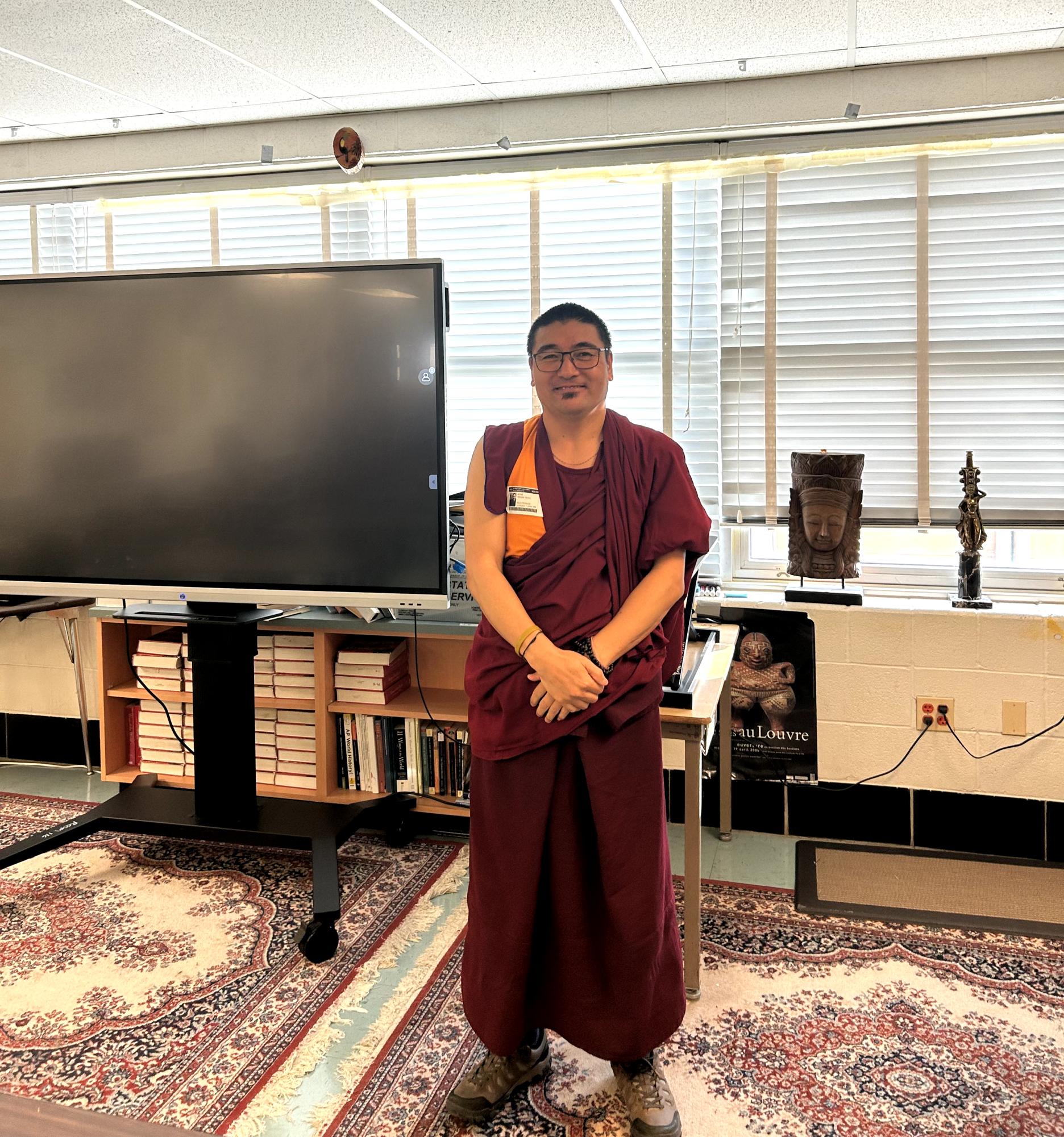
Buddhism’s main concept is that life is a cycle of suffering and rebirth, but freedom from suffering is possible by cultivating compassion and recognizing the impermanence of life. Being non-theistic, Buddhists believe in no God, but follow the teachings of The Buddha (named Siddhartha Gautama). The Buddha was an Indian prince turned wandering teacher who achieved enlightenment through meditation in the fifth or sixth century B.C.E. Dharma, or the teachings of the Buddha, is a Sanskrit word, also translated as Dhamma in Pali, the liturgical language of Theravada Buddhists.
There are different emphases of the Buddha and his teachings. Buddhism initially rose as a reaction against the stricter social caste and impersonality of society at the time. In the time of the Buddha, he famously achieved enlightenment after meditating for six years and then finally he sat under a tree near Bodhgaya, around modern-day Northeastern India.
Theravada Buddhism is practiced generally in Southeast Asian countries like Burma, Thailand, Cambodia and Laos, as well as Sri Lanka. This lens looks at the Buddha as a historical person who was not divine but still achieved enlightenment through resilience.
In Mahayana Buddhism, which is practiced all over Eastern Asia, the Buddha becomes more of a divine and transcendent being who is a source of compassion for all beings. Vajrayana Buddhism is a branch of Mahayana Buddhism and is affiliated with practitioners in Tibet, Nepal and Bhutan generally. Zen Buddhism is another branch of Mahayana that is practiced in Japan and is focused on meditation.
The vast majority of Buddhists aren’t monks and mainly follow the Five Precepts. These are guidelines structured for Buddhist “lay people,” while monks have many more rules and generally live in monasteries. This includes: a commitment to abstain from killing living beings, stealing, sexual misconduct, lying and intoxication. Buddhists also follow the Eightfold Path, which guides the path toward liberation from suffering.
Khenpo Tenzin Karze is a Buddhist monk who was born in Tibet and spoke with Mr. Joy’s class on Tuesday, Nov. 19, 2024. Dressed in the notable red monastic robes, he described running away from home when he was 13 years old as a complicated decision. He ventured through the Himalayas from Tibet to Southern India, where he would eventually study as a monk in the famous Namdroling Monastery. He speaks Tibetan, Hindi and Nepali and is working toward fluency in English through courses at Montgomery College.
He did stay in contact with his family and recalled from his time living in India that he received a letter in 1993 from his father notifying him of the passing of his older brother back home, but the letter was dated 1991. In his childhood, he and his friends would often walk through the Himalayas toward the city of Lhasa, the capital of Tibet (which has not been a sovereign country since its annexation by China in 1951), as a fun game or challenge.
When asked if there is something he’s done that he regrets, Karze narrated a childhood story where he once used a slingshot to kill a bird while playing a game with friends. On technology, Karze highlighted the importance of being skeptical of misleading news or information, especially with the abundance of technology that is flooding us today. Karze is now with the Kunzang Palyul Choling temple in Poolesville, Maryland.
“People in this world need to connect each other through good intention… toward all sentient beings,” Karze said. “That is the main goal Buddhism practices.”
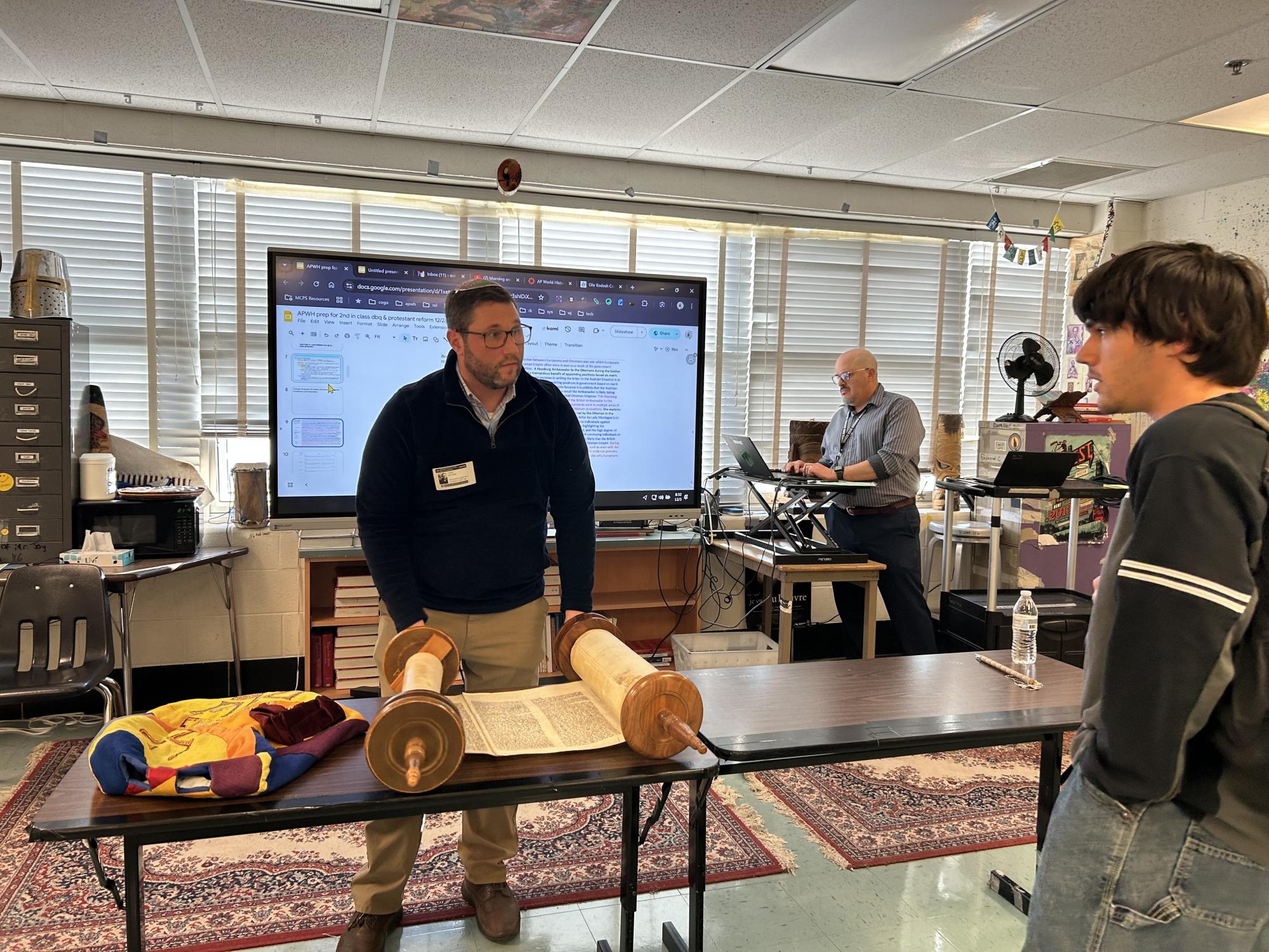
As the father of the Abrahamic religions, Abraham embraced a life worshipping one God that revealed Himself to him, which was unheard of at the time, save for Zoroastrianism. Abraham and his family tree would then pave the way for monumentally influential biblical figures that shaped both Christianity and Islam, but first, Judaism.
Rabbi Corey Helfand from the Ohr Kodesh Congregation in Chevy Chase visited on December 3, 2024. Unique from other speakers, Helfand gathered students by a table in the front of the classroom to look directly at the Torah scroll, posing as many questions toward us as we asked of him.
“Part of the rich history that dates back thousands of years is a reminder of how to perpetuate holiness in the world through the words that we speak and through the deeds that we act,” Helfand said. “I think that is a really important way of understanding what it means to begin a relationship both with understanding the faith and also in bringing people of different faiths together.”
The Hebrew Patriarchs were Abraham, his son Isaac and Isaac’s son Jacob, and they are seen as the ancestors of the first Jews. Jacob’s son Joseph was a powerful leader in Egypt (as seen in the movie watched in class: “Joseph: King of Dreams), but after his death, the Israelites (an ancient tribe which Jews originate from) in Egypt became enslaved by the new Egyptian Pharaoh. After about 400 years in Egypt, and about 200 of those spent in slavery, the prophet Moses led the Israelites to escape. This story is told in the Book of Exodus, the second book of the Bible, and commemorated every year through the holiday Passover.
Passover is celebrated with a meal called a seder and was what was taking place during the famous last supper of Jesus and his disciples. Yom Kippur is the holiest holiday in Judaism because of its focus on repentance of sins. It occurs after the 10 days of repentance following Rosh Hashanah, which marks the Jewish New Year.
Jews read and adhere to the Tanakh (also called the Hebrew Bible or Old Testament), which includes the Torah, the first Five Books of Moses and the 10 Commandments that Moses received from God on Mount Sinai. As a Rabbi, Helfand leads his congregation in readings of the Torah every week, following traditional practices: keeping the Torah in an ark, an ornate cabinet at the front of the synagogue (Jewish place of worship); and reading the Torah with a pointer called a “yad,” which protects the writing and material of the Torah, which is made from the skins of a kosher animal.
Jews follow the laws of kashrut, which are dietary laws. Keeping kosher includes rules like prayers, cleaning before eating, and forbidding mixing meat and dairy as well as all pork. Jews also follow the Oral Torah which is a body of law and tradition passed down through rabbis, spiritual leaders who guide their Jewish communities, then compiled in written form in the Talmud. As the direct word of God, the Torah is the most important and well-studied holy book in Judaism. It advises Jews to not only love and serve God but treat others with love and compassion.
“One of the things that people should know about being Jewish is that at its core, it’s about relationships with God and with one another through love and through kindness,” Helfand said.
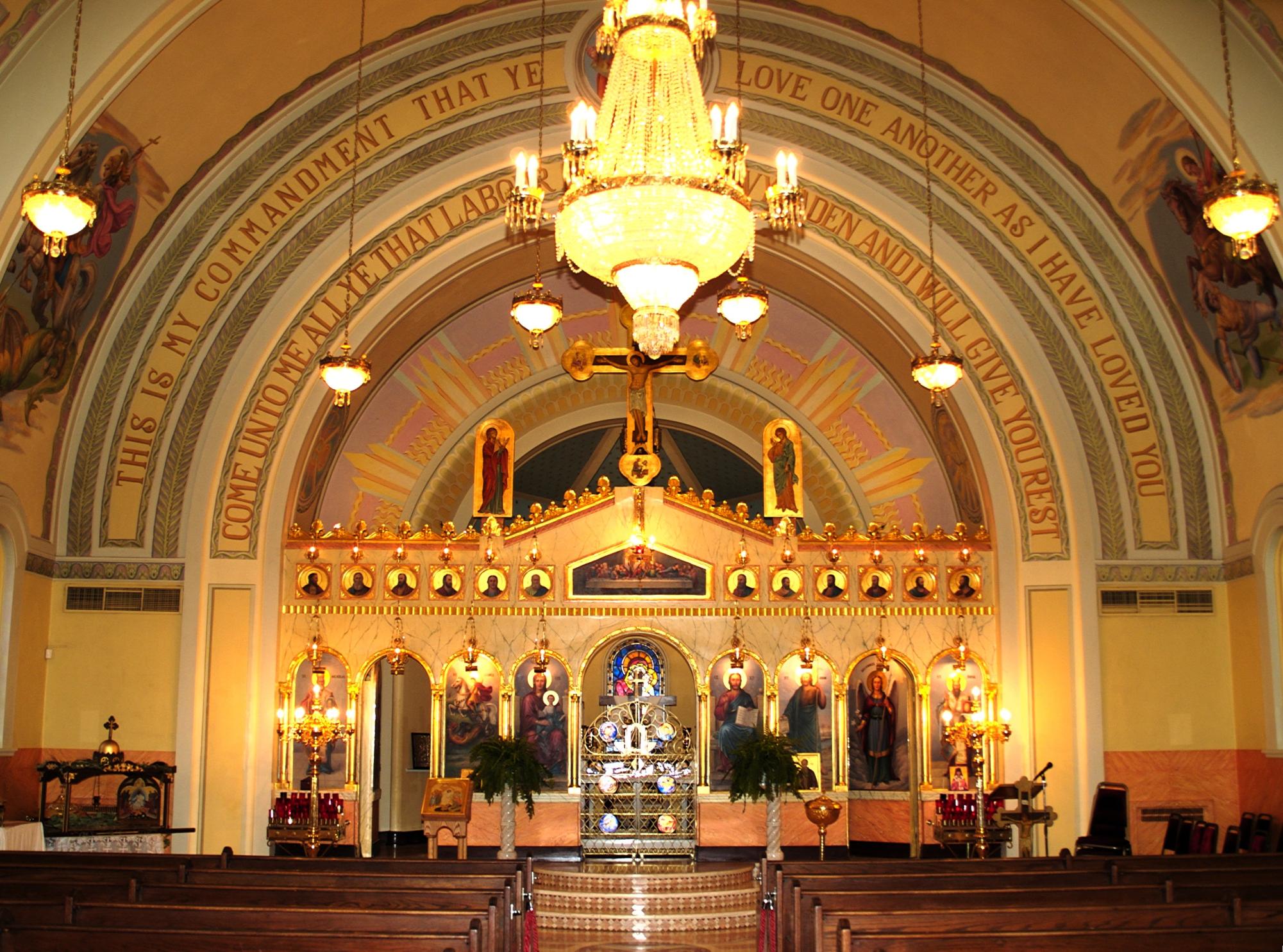
Christianity comes from the central figure of the religion, Jesus Christ. Christ is a title that means “anointed one” or “messiah.” While he was alive in the 1st century around the Levant region in the Middle East, Jesus demonstrated his divinity by healing the sick and resurrecting the dead. Christians believe in the Holy Trinity, a core idea in Christianity. Regarded as the Messiah by Christians today, Jesus fulfilled the Jewish prophecies of his time, leading to the formation of Christianity from Jewish followers.
The Bible, the holy book of Christians, is a collection of the Old Testament and the New Testament. The New Testament comprises scripture that records not only the life of Jesus but how he lived and how Christians should strive to live as he did. These include the Gospels, written by followers of Jesus named Matthew, Mark, Luke, and John. Matthew and John were both part of the 12 apostles of Jesus, who spread Jesus’ message after his death and resurrection.
Michael Haldas, a religious educator from the St. George Greek Orthodox Church in Potomac, visited the class on Dec 6, 2024. He emphasized that God is always helping even during tough times when it appears that help is not there.
“Our understanding of God is that God is a good God who loves mankind and he’s never against us,” Haldas said. “We ought to take that understanding and apply it to each other so that we can heal a lot of the differences and a lot of the tribalism that goes on in today’s society.”
Haldas’ perspective is how we should think retrospectively, learning how we can grow from what we’re going through right now, especially if it is difficult.
Haldas clarified that God was not punishing Adam and Eve in the Garden of Eden story in the Book of Genesis. God isn’t delivering a punishment in and of itself, but rather putting them on a journey that would help them become better people. The snake that convinced Even to eat the apple was not in the form of an actual snake but a spiritual being of the devil that convinced them.
Love is foundational to Christianity, with God being the source of love and compassion, and Christians are called to love God and humankind as Jesus loved them. One of the most famous ideas in Christianity is the idea of loving our neighbors as ourselves, which is what Jesus taught to his followers. He also taught the importance of forgiveness, and forgiving others as God as we have been given forgiveness by God through Jesus Christ.

To become a Muslim, one must believe in the core principles of Islam, which include the core Five Pillars. The first pillar of Islam is The Shahada, which one must sincerely recite. It is a profession of faith spoken in Arabic, which means “there is no god but Allah, and Muhammad is the messenger of Allah.” After reciting The Shahada, one becomes a Muslim.
The second pillar of Islam is Salat, praying five times a day. Since Muhammad, all Muslims pray five times a day in the direction of the Kaaba, in Mecca, Saudi Arabia. The third pillar is Zakat, which is a mandatory donation (for those who can) to the poor meant to purify your heart and wealth. The fourth pillar is Sawm, the act of fasting during Ramadan, a one-month holiday that rotates around the year to cleanse the mind, body, and soul. Those who fast develop higher consciousness and mindfulness of God. Ramadan this year ended on March 29, 2025. The final pillar of Islam is the Hajj or Pilgrimage to Mecca for Muslims who can.
Muslims follow the Qur’an, which is the direct word from God that was revealed to Muhammad ﷺ, who is revered as the last prophet and messenger of God, following Abraham and Jesus before him. The word “Allah” is the Arabic word for God, and the word “Muslim” in Arabic means “one who submits” (to the will of Allah).
Tanzila Malik and Esha Bhatti from the Bait-ur-Rahman Mosque in Silver Spring, an Ahmadiyya Muslim community, spoke on Jan. 14, 2025. Both of them being Maryland college students, they spoke on the choice to wear hijab in a country where they can have that choice and represent their faith.
“We [humans] can’t judge anybody. At the end of the day, God is the ultimate judge… someone who is a non-hijabi could have stronger faith than I do,” Malik said. “We just teach to love each other, be forgiving [and] patient, all kinds of things.”
Ahmadiyya Islam is a minority sect within Islam that is persecuted across the world, including in Muslim-majority countries like Pakistan, where the largest population of Ahmadis lives. The key belief difference in Ahmadiyya Islam is that the second coming of the Messiah has already come with the Indian religious leader Mirza Ghulam Ahmad in the late nineteenth century.
“I would emphasize that we don’t believe only Muslims go to heaven,” Bhatti said. “If you follow Christianity or Judaism… or your moral belief system to the book, then you can also be saved or attain salvation.”
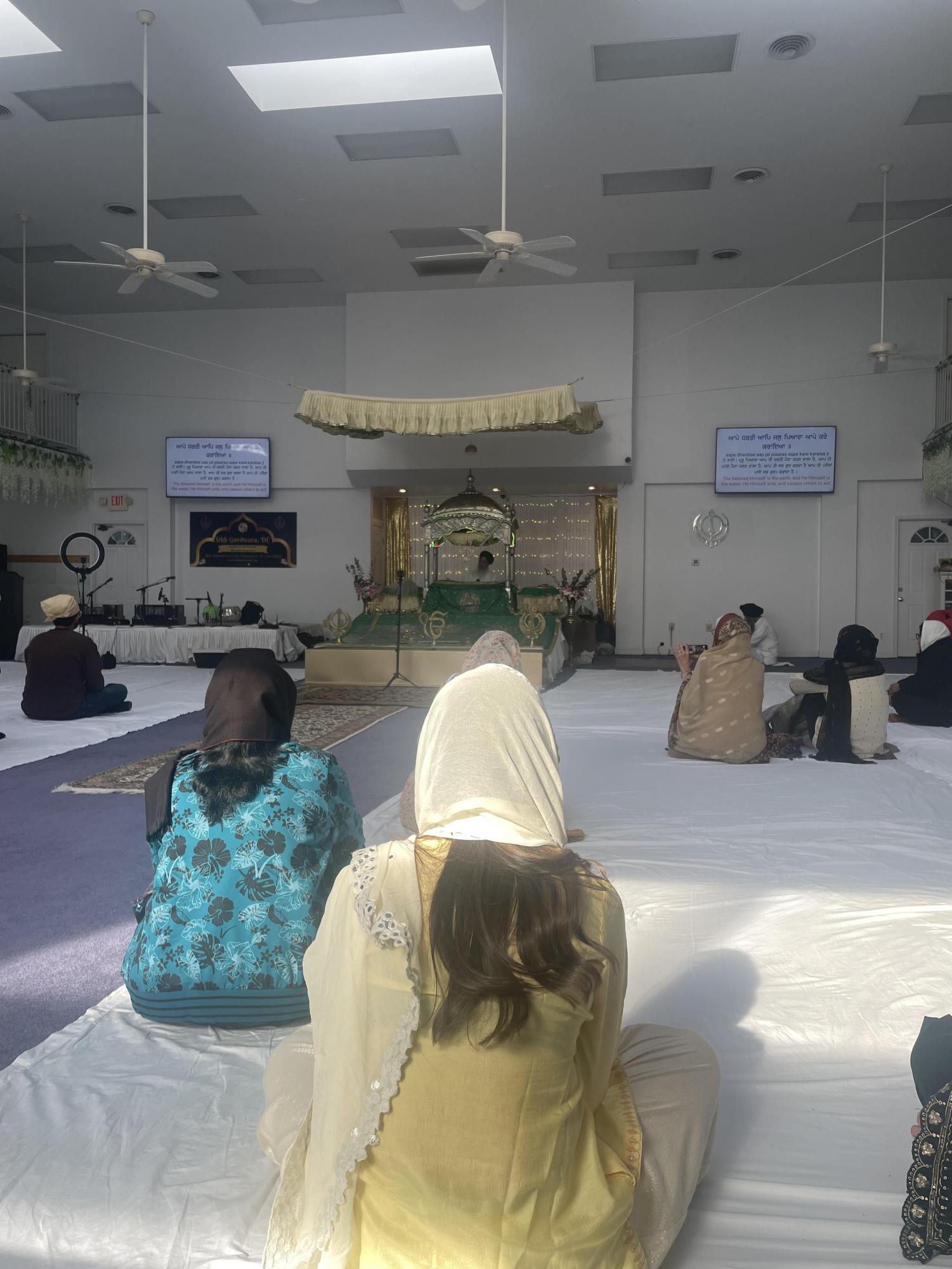
The word Sikh means “student,” coming from the Punjabi language (derived from Sanskrit) which is spoken primarily in the Northern Indian and Pakistani states of Punjab. Sikhs follow the teaching of Guru Nanak, who founded the Sikh religion around the year 1500 C.E. A monotheistic faith, Sikhs believe in the oneness of God; dedicate themselves to seva, or acts of selfless service; and live a life of integrity and honesty. Sikhs often chant the name of God, Waheguru, as a form of meditation and spiritual importance, reminding themselves of the presence of God.
While the Punjab region, both 600 years ago and today, is surrounded by large Muslim and Hindu populations (modern-day India and Pakistan), Sikhism is not derived from any other pre-existing faith, though some cultural elements may be similar. The eternal Guru of the Sikhs is the Guru Granth Sahib, which is their holy scripture and compiles the teachings of the ten human gurus who were alive from the years 1469 to 1708.
There is no inherent meaning behind the choice of turban color that Sikh men and some women wear to cover their uncut hair, following one of the five symbols of Sikhism, which makes Sikhs externally distinguishable and internally devoted. When a Sikh boy reaches the age of 11 or 12, they have a turban-tying ceremony by an elder, then they tie their turbans after.
The concept of uncut hair is called kesh, and Sikhs keep a comb called a kangha. Sikhs also wear an undergarment called a kachera and a steel bracelet called a kara, representing the circle of life and the eternality of God. The last item is a small sword called a kirpan, which Sikhs carry as a symbol of their duty as warriors to defend the weak and oppressed.
Another way Sikhs protect others is through the concept of seva, which is embodied in the Sikh place of worship, the gurdwara. The largest free soup kitchen in the world is a gurdwara named the Sri Harmandir Sahib or the Golden Temple, located in Punjab, India. Gurdwara serves langar, which is a free community meal served to anyone who needs it, especially those who are unable to find food.
One of the holidays Sikhs observe is called Vaisakhi, a harvest festival celebrated by both Hindus and Sikhs. Sikhs honor the founding of the Khalsa Panth in 1699 by Guru Gobind Singh, the last Guru of the Sikhs. During the celebration of Vaisakhi, one of the vital elements is Bhangra, a traditional form of dance that is part of Punjabi culture.
Studying these religions, as well as a unit on cults and new religious movements prepares students for a life where they interact with different cultures in an open-minded way. Throughout all of these religions, some core concepts and beliefs are more similar than generally thought. Religions, especially Abrahamic ones, indicate the importance of free will, or at least having the ability to choose how one lives their life. Ideas of oneness, peace, meaning and how to live life can all be connected when scrutinizing any religion.
“My main takeaway is that religions all kind of say the same thing about the golden rule: do unto others as you would want to do unto yourself,” Joy said. “Commonality is probably the most valuable piece that I see that is prevalent in all religions, and I like teaching it for that reason.”
Your donation will support the student journalists of Walter Johnson High School. Your contribution will allow us to purchase equipment and cover our annual website hosting costs.
